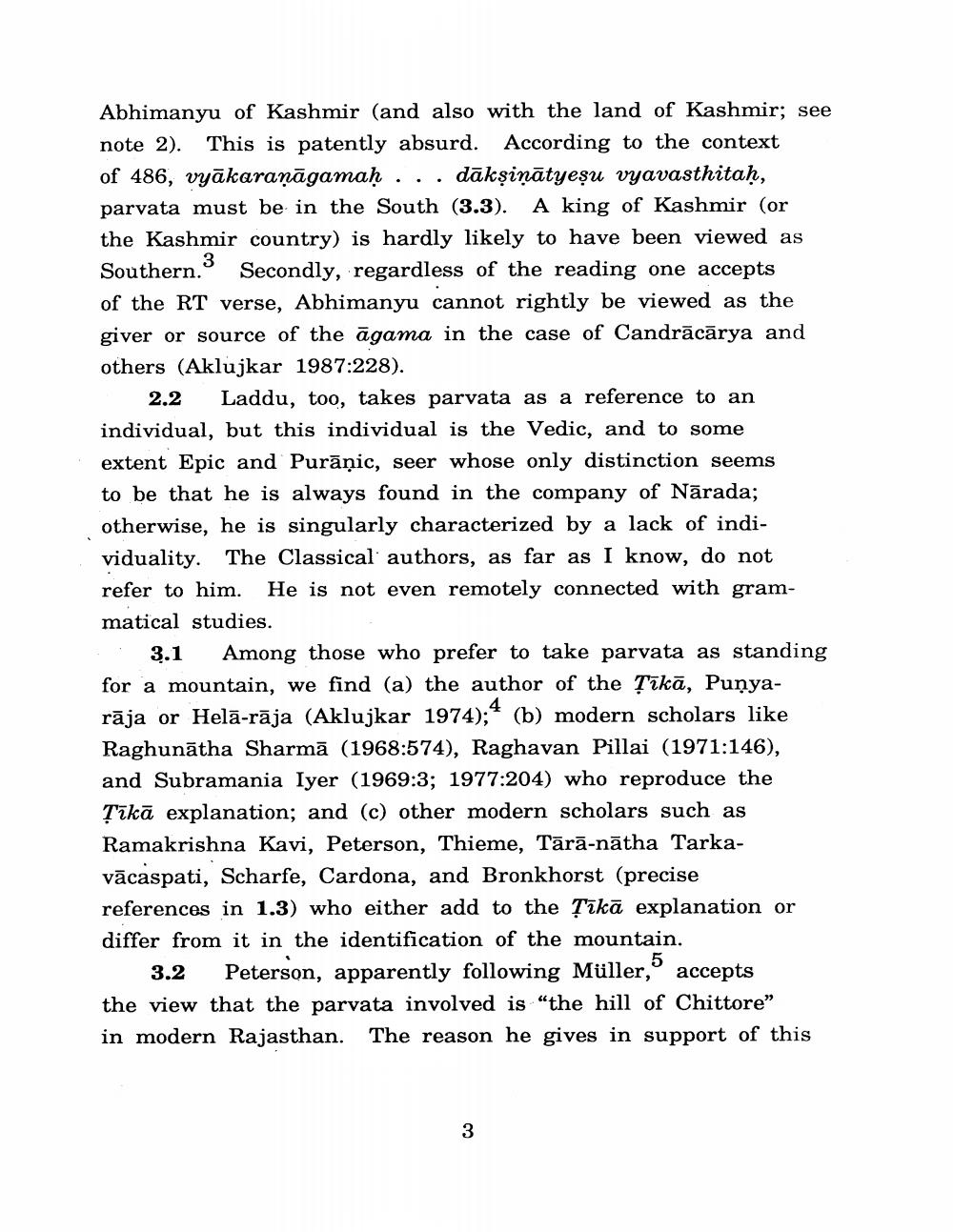Book Title: Paninian Studies Author(s): Ashok Aklujkar Publisher: Ashok Aklujkar View full book textPage 3
________________ of 486, vyākaraṇāgamaḥ Abhimanyu of Kashmir (and also with the land of Kashmir; see note 2). This is patently absurd. According to the context dākṣinātyeṣu vyavasthitaḥ, parvata must be in the South (3.3). A king of Kashmir (or the Kashmir country) is hardly likely to have been viewed as 3 Southern. Secondly, regardless of the reading one accepts of the RT verse, Abhimanyu cannot rightly be viewed as the giver or source of the agama in the case of Candrācārya and others (Aklujkar 1987:228). 2.2 Laddu, too, takes parvata as a reference to an individual, but this individual is the Vedic, and to some extent Epic and Purāņic, seer whose only distinction seems to be that he is always found in the company of Narada; otherwise, he is singularly characterized by a lack of individuality. The Classical authors, as far as I know, do not refer to him. He is not even remotely connected with grammatical studies. 3.1 Among those who prefer to take parvata as standing for a mountain, we find (a) the author of the Tikā, Punyarāja or Helā-rāja (Aklujkar 1974); (b) modern scholars like Raghunatha Sharma (1968:574), Raghavan Pillai (1971:146), and Subramania Iyer (1969:3; 1977:204) who reproduce the Tīkā explanation; and (c) other modern scholars such as Ramakrishna Kavi, Peterson, Thieme, Tārā-nātha Tarkavācaspati, Scharfe, Cardona, and Bronkhorst (precise references in 1.3) who either add to the Tikā explanation or differ from it in the identification of the mountain. 5 3.2 Peterson, apparently following Müller, accepts the view that the parvata involved is "the hill of Chittore" in modern Rajasthan. The reason he gives in support of this 3Page Navigation
1 2 3 4 5 6 7 8 9 10 11 12 13 14 15 16 17 18 19 20 21 22 23 24 25 26 27 28 29 30 31 32 ... 47
